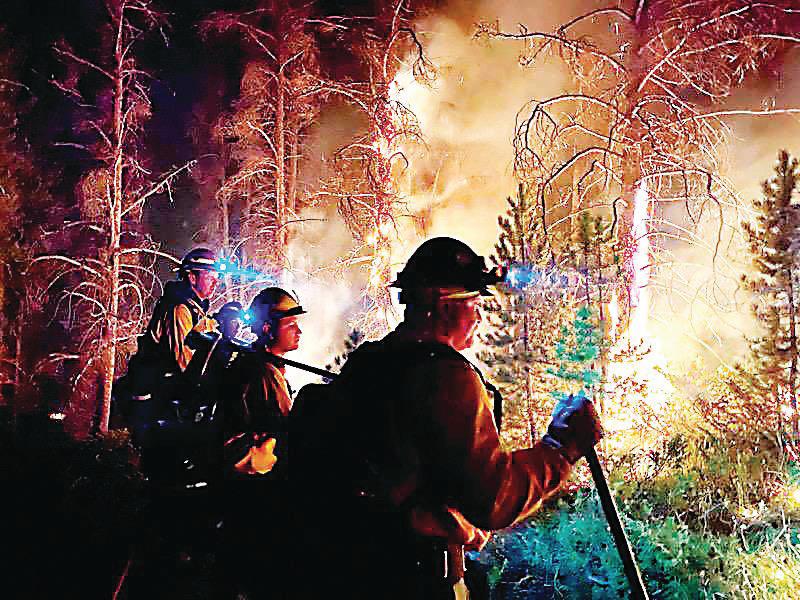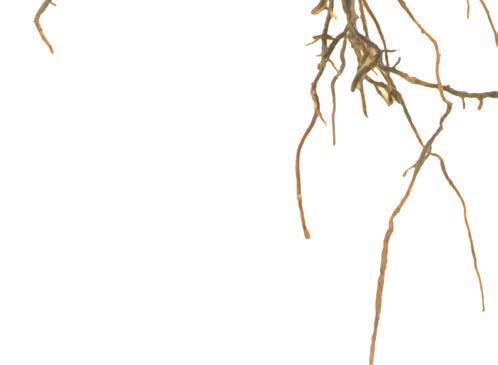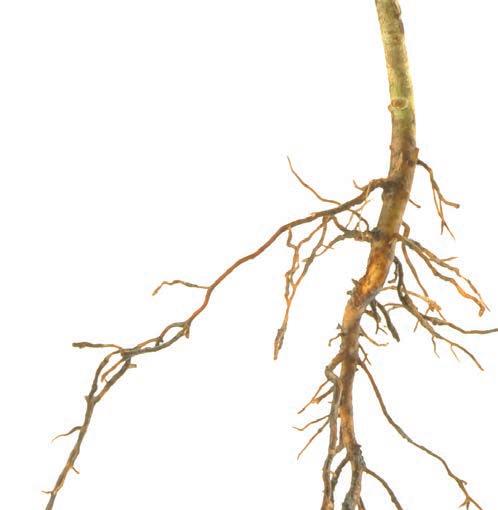
6 minute read
Amid risk of living on wildfire-prone grasslands, Boulder County’s search for solutions
BY TIM DRUGAN BOULDER REPORTING LAB
e Marshall Fire exposed the need to reduce wild re risk on the grasslands of Boulder County. But there’s a problem: Even the best reprevention techniques on the plains don’t work as well as they do in the mountains.
“Grasslands are much di erent than forests,” said Katharine Suding, a professor of ecology and evolutionary biology at the University of Colorado Boulder, who is advising a Boulder County grasslands working group established to help prevent another Marshall Fire.

On the plains, Suding said, a re can burn all plants in its path only to have intact roots grow back stalks within months. Trees take longer to return. If a re thins a forest — through a wild re or a prescribed burn — that forest enjoys at least a few years of reduced risk. Grasslands don’t.

“We might get a year of protection after a prescribed re” on the plains, said Stefan Reinold, a resource manager for county Parks and Open Space. Reinold is also a member of the grasslands working group, along with scientists, land managers, ditch company mangers and re protection district members. e group is a subset of the Boulder County Fireshed that is made up of a similar cohort of local scientists and land managers working to reduce re risk.
A former forester for the county, Reinold said prescribed burns are di cult to implement in the mountains — and even harder on the plains. Much of the county’s open space on the plains is leased agricultural land. Farmers who might be open to their grasslands being scorched intermittently probably don’t want them burned every year, which is what it would take to be e ective.
Still, the public, especially those recovering in the Marshall Fire burn scar of Superior and Louisville, want something done.
“ ere’s a lot of pressure, of course, to come up with solutions,” Reinold said, and he is sympathetic. “But one of our biggest concerns is there is no clear solution with grasslands. If there were, we would be all about it. We’d be out there trying to decrease re hazard in every aspect we could.”
Reinold said since the Marshall Fire, the county has been criticized by residents for mismanaging its grasslands. One of the suggestions residents often make is increased grazing. But much of the area burned by the Marshall Fire had been grazed — multiple times — in the year leading up to the re.
“We grazed three times,” Reinold said. “Which is getting to the level of overgrazing in some areas that abut Louisville.”
Mowing is another recommendation he often hears. ough it cuts some re fuel, mowing leaves vegetation on the ground where it can still carry re. And the amount of mowing required is untenable. Reinold said Boulder County has 343 miles of agricultural property lines. Should Parks and Open Space put a 100-foot bu er along property lines to protect vulnerable neighborhoods, it would equal almost 4,000 acres they’d have to mow — “and often” — because the grass keeps growing.
Reinold raised the possibility of planting low-growing vegetation where prairie and neighborhoods meet, the idea being such vegetation wouldn’t burn with the ferocity of dried-out grass.
“ ere’s no data saying that would work,” Reinold said. “But we could try.”
But weather conditions that fueled the Marshall Fire might have overcome even perfect grasslands management. Eighty mile-per-hour winds came after a fall that saw almost no moisture.
“Anytime a re has gotten established with winds less than 30 miles per hour, we’ve gotten control of it,” Reinold said. “But nothing has proven able to stop a re backed by
80 mile-per-hour winds.”
Suding agreed, saying the risk of catastrophic res will increase as fall in Boulder gets drier with worsening climate change. “ ere are actually many grassland res each year in this area,” she said. “But most occur when the plants are green and weather conditions are not super windy, so they get put out before they get big.
“In wind events like what occurred during the Marshall Fire, it would be hard to imagine that any active management of grasslands could reduce the risk.”
Suding said a better bet might be investing in active patrols to spot ignitions on high-risk days and safeguarding homes.
Such safeguarding, also known as home-hardening, is the specialty of the Wild re Partners Program that has mainly worked with homeowners to reduce their re risk in unincorporated western Boulder County. Using money from the 1A sales tax that passed last year, Wild re Partners is expanding into eastern Boulder County, helping residents understand the re risks certain choices might pose to their homes — like wooden fences, shrubbery up against siding, and vegetation prone to violent incineration, like junipers. Reinold said home-hardening, coupled with experimental techniques like targeted grazing is our best bet at avoiding another Marshall Fire. Targeted grazing puts cows on highrisk areas, like borders of prairie and neighborhoods, to munch down fuel before the fall shoulder re season. e main takeaways of their work will likely be a combination approach: some grazing, some prescribed burns, and some investment from the public in protecting their properties as best they can.
Suding added that creating better models for grassland re risk — an historically underrepresented research area when compared to forest wild res — should be a top priority.
“We need to know more before making quick decisions,” she said, explaining that hasty actions to reduce re risk might not only fail to do so, but could also harm the landscape. “If we only think about reducing grassland fuels and do it by mowing or other treatments, that might really damage soil health and biodiversity. We don’t want that, particularly since grasses regrow within a few weeks after a treatment.” at’s one of the goals of the working group.
In early June, members said they hope to put out a document to show residents what is already being done to address re risk on grasslands, and what practices should be adopted moving forward.

“ ere’s no silver bullet,” Reinold said. “If there was clear information of what to do, people would have done it already.” is Boulder Reporting Lab story via e Associated Press’ Storyshare, of which Colorado Community Media is a member.
Local foragers teach students to cook with wild foods
ere some see weeds, Erica Davis sees ingredients for delicious soups and salads.
“In urban areas, there are a lot of plants that we call weeds that spring up everywhere, that are widely available to people, that are edible and good,” she said.



Foraging is the act of gathering wild plants from nature, generally to be used for food, and sometimes to make other products. For Davis and other foragers, spring means plants are starting to grow –which means kitchens will soon be full of wild foods ready to be prepared in creative
Across the Front Range and in the mountains, several foragers share their knowledge through cooking classes based on
Why cook with wild food?

Davis, who runs a blog called Wild Food Girl, has upcoming classes in Ramah and Fairplay. Her Arvada class this spring has

“I think one of the biggest challenges with edible wild plants is that people don’t always know how to prepare them,” she said. “We all know how to cook spinach, we all know how to make broccoli — but we don’t all know how to cook tumble mustard so that it tastes good. So in my classes, I like to give students that experience of preparing an edible wild plant — or three — in a way that I think they are going to Davis’ classes begin with an hourlong plant walk where students learn the names of plants and safety and sustainability guidelines for foraging. Afterward, she teaches them how to prepare several of the plants they have for-
In the spring, dandelions and wild mustard greens are common staples in her
“People sometimes picture foraging as going out into the forest and picking plants
— and that’s part of it — but I would really encourage people to learn the weeds and make use of them,” she said. “A lot of them are non-native species, so there really aren’t as many ecological considerations with picking them.”

Davis teaches her students to make dandelion green soup from a recipe passed down by an Italian relative. Musk mustard is great in salads, and tumble mustard and field pennycress are fun to ferment, she said.
Beyond the creative and flavorful uses of foraged foods, research from 2019 suggests that wild edible greens harvested in urban areas can be abundant and highly nutritious. The study dubbed wild edible plants “open-source food.”
“This idea that open-source food is out there for anybody to eat and make use of — and then furthermore, it’s organic, it’s free, it’s fresh — I just think that’s a great concept,” Davis said.
Safety precautions
Despite their affordability and freshness, wild plants are not all safe to eat. Crystal Baldwin, who teaches wild plant-based classes at her Golden business, Earth Sweet Boutique, said it’s always important to triple-check plants before you eat them.
“I don’t like to frighten people away from… foraged foods because there’s a lot of very safe ones,” Baldwin said. “But I like them to be aware that there are dangerous, poisonous ones that will kill you, and so it’s important to kind of have an idea of what those might be and what to look out for.”
Baldwin encourages those interested in foraging to start by taking classes, working with local experts and reading about which plants are safe to eat.
She also said it’s important to check if plants are near old buildings that could be contributing lead to soil or if plants have been sprayed with pesticides.










